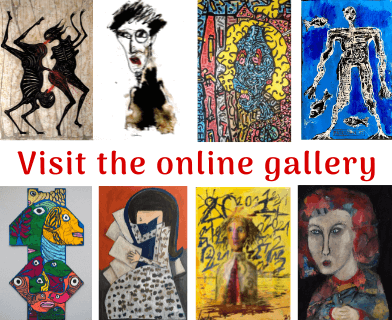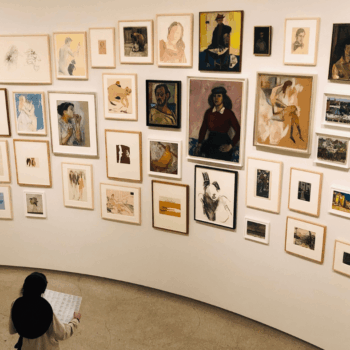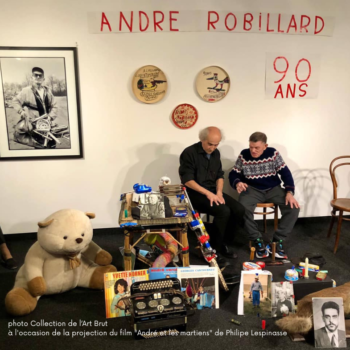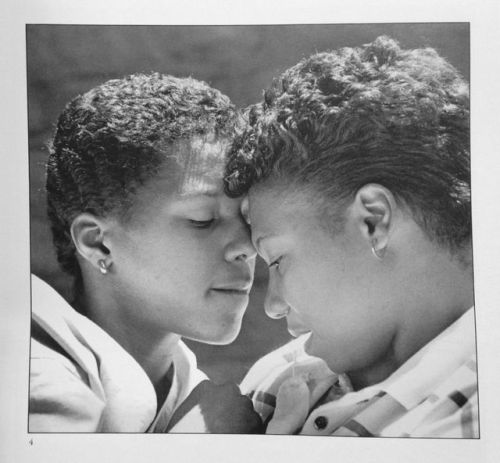
Four artists committed to the LGBTQI+ cause
- Post published:28 December 2022
- Post category:Art Files
Pierre et Gilles : for a perfect world
Four-handed creation
It has been forty years that the French artist couple has been creating with four hands. “We met at a party, one night, at Kenzo’s (…) Since then, we have never left each other. And we worked together a year later” (in Pierre and Gilles Clair-Obscur, editions Racine and Lannoo 2017).
Pierre is the photographer and Gilles the painter. Before they met, they were already artists.
But in fact, to say that Pierre is the photographer and Gilles the painter is to simplify the reality of their work. It would be more accurate to say that they create painted photographs together.
Artisanal scenographers
Their name “Pierre et Gilles” almost seems to be the name of a character and not of two people. After all, when two artists work and live together, the anonymity of this third “character” is certainly welcome and allows them to work over the long term.
Pierre and Gilles work according to a well-tested method. In a first phase, they draw the concept (Pierre draws, Gilles completes). Then, they build the set. Not a digital set but a real set made of objects, fake sky, fake grass, real or fake flowers… Then, they take care of the costume, do light tests with a model and get help from a hairdresser and a make-up artist. All this preparation work allows them to obtain a very sophisticated look.
The world according to Pierre et Gilles
This concern for sophistication leads to an idealization of their models. Idealization of the bodies, often naked or partially naked, but also idealization of the faces. Without wrinkle, without folds, without contraction, the faces which pass between the hands of the two artists are always perfect faces. Most of the time, they have no expression which contributes to create a feeling of fullness, abandonment or even sadness. Sometimes, the faces can smile or even laugh but always with an idealized smile or laugh. The teeth are perfect and white, like a smile of eternal youth.
This idealization of the models, these perfect and idyllic settings are the characteristics of the world according to Pierre et Gilles. Of course the two artists know that the world is sometimes difficult. Homosexuals, they have certainly had to endure violence. The violence of others but also the violence of the disease since many of their friends or models died of AIDS. They approached this disease through their series “Les naufragés” realized in the years 1985, 1986 and 1987. These young men who sleep on marvelous grounds are a bit like Arthur Rimbaud’s “Le dormeur du val” (The Sleeper in the Valley), whose death is understood to have occurred when he almost seemed to be smiling.
Religious and musical idols
Pierre et Gilles are very interested in idols : traditional and religious idols, and modern ones, those of popular music.
The portraits are inspired by Christian or Hindu iconography, as well as French (Sylvie Vartan, Sheila, Indochine, Françoise Hardy…) or international (Mick Jagger, Iggy Pop…) pop idols. Sometimes they combine the two themes: “La Madone au cœur blessé” features the singer Lio as a Madonna.
Marie France and the others
Another theme very much developed by Pierre et Gilles concerns the world of gender and other sexualities.
Thus, the singer and actress Marie France, who was born a boy in Algiers in 1946 and became a woman when she arrived in Paris in 1962, is one of the most present (underground) muses in Pierre et Gilles’ creations. Indeed, the first image of Marie France dates back to 1979 while the last one presents her as Edith Piaf, “Dans le quartier Saint-François” in 2017.
Similarly, the two artists have made series of portraits of sailors often shirtless as in “Vive la Marine”, 1997 or in a sailor suit starting with the portrait of the fashion designer Jean-Paul Gaultier.
Still in the same spirit, Pierre et Gilles have often photographed LGBTQI+ personalities, the most recent being the singer and drag queen Conchita Wurst in “Crazy Love” in 2014 and the singer Eddy de Pretto in 2017.
They have also staged many homosexual couples, starting with themselves, but also “Les amoureux” in 1998 and “David and Jonathan” in 2005.
Unquestionably, Pierre et Gilles have done much for the acceptance of human diversity.
Gilbert et George, performance and photomontage
Gilbert and George are visual and performance artists who have been working together in England since 1967.
When they were both students at St Martins School of Art, their meeting was love at first sight. They have been a couple ever since and have never stopped creating together. It is almost impossible to see them without each other.
At the beginning, they are artists of performances immortalized by series of photographs.
For these performances, they usually dressed in English business suits, which became a real uniform for them. From this period, two photographs remain emblematic, The Singing Sculpture, 1970 and Red Morning (Hate) 1977.
from performance to photomontage
Gradually, they opened up to large-scale colored photomontages without leaving the world of performance art. Gilbert and George have never really stopped considering themselves as two “living sculptures” forming together a single artist.
Sexuality, death, racism, violence are recurrent subjects of their colorful compositions influenced by Pop Art. They also do not hesitate to play on comical effects to tackle serious subjects. Homosexuality is thus a recurring subject in their creations for artists who declare that it is necessary “to prohibit religion and to decriminalize the sex”.
Those whose slogan is “art for all” have constantly taken the pulse of English society. They have worked on the communities that rose up for more rights and freedom in the 1970s, on the AIDS drama, on the 2005 London terrorist attacks and on many other events or social trends that are shaking England.
Joan E. Biren, making it visible
In June 1969, in New York, the police raided the Stonewall bar, a meeting place for the city’s homosexual community. Spontaneous riots took place in reaction. This event is emblematic of the defense of LGBT rights in the United States and in the world.
One year later, the first Pride march was organized in New York. Other cities will progressively follow, including Paris in 1977.
It is in this context of birth of the LGBT movements that Joan E. Biren, known as JEB, wonders about the image of the lesbian woman in photography. It is about what she calls “false lesbians”, images photographed and fantasized by men and for men.
Joan E. Biren, then a student, improvised herself as a self-taught photographer in order to give real images of lesbian women to the lesbian community. Through this approach, JEB seeks to make visible and proud the lesbians who had no representation of themselves.
Her work is thus built in this militant gesture. At the beginning of her career, she began a tour of the United States to show her photographs to women who wanted to see them. Her work was published in the photography magazine “Aperture”, giving her great visibility. She subsequently published a book, Eye to Eye, in 1979, recently reissued by Anthology Editions.
Activist photography
Before considering herself an artist, Joan E. Biren first saw herself as a lesbian activist. It was only with the evolution of American society that she gradually came to see herself as an artist. Her work as a photographer focuses on women’s couples in an often very moving and intimate way.
On the occasion of the 50th anniversary of the Stonewall riots, in 2019, eight events dedicated to her work took place in the United States, including the presentation of 19 photos on a 2-meter high façade, a project initiated by the Leslie-Lohman museum in New York.
“I’m so happy and at the same time surprised today, because I’m not the kind of artist whose work has been exhibited until now.”
Joan E. Biren for Jeanne magazine, a 100% Lesbian French magazine . Article by Stéphanie Delon, June 2019
Keith Haring, the artist with a meteoric rise
The American artist Keith Haring had his first solo exhibition in 1982 in New York and died in 1990 of AIDS. His last public work, a fresco on a church in Pisa, dates from 1989.
Despite this very short career, Keith Haring has profoundly marked contemporary art as much by his style “Haring’s claw” as by his commitment to society by denouncing, for example, racism, apartheid, homophobia or the ravages of drugs. Thus, he makes of his art a means of fighting against the crack epidemic which rages at the time in New York “Crack is wack”. This work was initially done underground on the walls of a handball court and was restored in 2007. He also painted to promote the use of condoms.
Haring's claw immersed in the world
The Keith Haring style corresponds to simplified forms surrounded by black and sometimes reproduced in very large numbers on the same work. They are silhouettes, often androgynous, of dogs, four-legged babies, television sets, dolphins, UFOs…
His human forms seem to dance, intermingle, help each other or assemble like pieces of a puzzle. Keith Haring had several sources of inspiration: for example the giant engravings of the Nazca desert in Peru.
Like Dubuffet ...
But the artist was also a fan of the great Jean Dubuffet and there are indeed similarities between Keith Haring’s characters and the world of Hourloupe and the landscapes of the closerie Falbala.
or like comics ...
But of course there is also the world of American comics with its superheroes in almost danced positions. Keith Haring uses the codes of comics by using lines to signify the movement or the voice of his characters.
An omnipresent gay commitment
Because Keith Haring’s wish was to meet the widest possible public, he expressed himself through street-art and public frescoes.He also used his characters in a variety of derivative media, such as clothing, books, games and posters.
Throughout his career, one of his favorite themes was homosexuality (Keith Haring was himself homosexual) with his claim, the fight against homophobia and at the end of his life, the fight against AIDS. In February 1989, he created a huge 34-meter mural in Barcelona, “Todos juntos podemos de Parar el SIDA” (Together we can stop AIDS), which was completed in just 5 hours.
This mural was painted in red lines, whereas the painter usually expressed himself in black lines. Keith Haring had been diagnosed with AIDS a year earlier. He would die a year after this work.
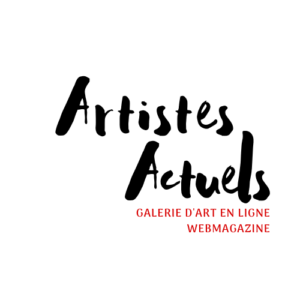
The editorial team
The thrill of artistic discoveries

